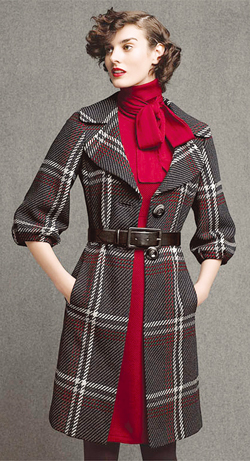
Bringing up BURBERRY in the fashion industry, you will think of its classic plaid, which was originally a decorative pattern lined with raincoats. Now it has become a symbol of BURBERRY.

In fact, lattices have a long history in the United Kingdom, and the earliest plaid patterns appeared in the middle of Scotland, dating back to 1700 years ago. The plaid at this time is a symbol of the family symbol. The grids of different sizes and colors represent different villages, places or families. King George IV of the United Kingdom used Scottish plaid clothing to visit Scotland and announced that "let all British people wear their own plaid." After this, the British people began to design their own lattice designs. Today, there are thousands of lattices registered by the “well-known lattice registration center†in Britain. There is no doubt that BURBERRY lattice is one of the most famous lattices.

BURBERRY carries on the classic lattice pattern. This three-coarse-and-fine cross pattern composed of light camel, gray, white and red appears in the design of fashion, bags and even perfume bottles, leading the fashion world. Another wave of lattice fashion boom.

Driven by BURBERRY, other brands also freely combine this pattern in color and collocation, and are decorated on clothes, shoes, scarves, hats, handbags, suitcases, travel bags, purse notebooks, umbrellas and household items. Vivienne Westwood is a loyal supporter of plaid patterns. Almost quarterly works use plaids. Marc Jacobs, Karl Lagerfeld and other designers also like to use plaids in their designs. The plaid pattern has become a popular style for designers to interpret. Elements.